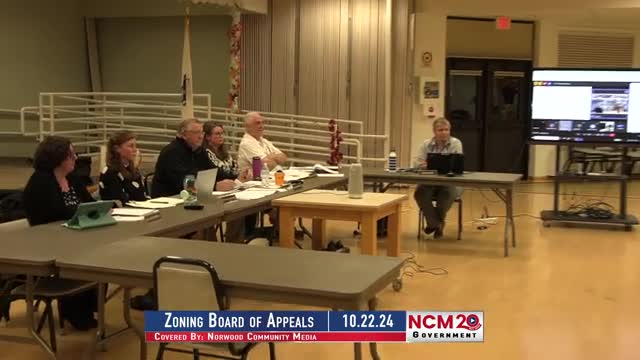Community rallies against controversial parking lot proposal
October 22, 2024 | Town of Norwood, Norfolk County, Massachusetts
This article was created by AI summarizing key points discussed. AI makes mistakes, so for full details and context, please refer to the video of the full meeting. Please report any errors so we can fix them. Report an error »

In a recent government meeting, community members voiced their concerns regarding a proposed parking lot project that has sparked significant opposition among local residents. The discussions highlighted the tension between development and neighborhood preservation, with several speakers emphasizing the potential negative impact on property values and community aesthetics.
Gail Ladhani, a long-time resident, recalled her involvement in the creation of a cul-de-sac on Neponset Street, underscoring the collaborative efforts of neighbors to maintain the character of their community. She noted that another neighbor, who had previously supported a fence project, has since expressed disapproval of the parking lot proposal, indicating a shift in community sentiment.
Frank Adams, a town meeting member, articulated the concerns of elected representatives, stating that the intent behind land use decisions should not be disregarded. He warned that the parking lot would likely not generate significant revenue for the town and could lead to a decline in property values, presenting a net cost to the community.
Jean Ferreira Taylor, also a town meeting member, expressed her frustration over perceived loopholes in the regulations that allowed the project to advance. She urged decision-makers to consider the potential drainage issues and the overall impact on the neighborhood, advocating for minimal disruption to residents. Taylor acknowledged the property owner's rights but implored the committee to find ways to mitigate the project's effects.
The meeting also included the reading of several letters opposing the project, with notable contributions from local residents and neighborhood associations. A petition signed by 21 residents further underscored the community's collective disapproval, highlighting the strong sentiment against the proposed development.
As discussions continue, the local government faces the challenge of balancing property rights with the desires of the community, as residents remain vigilant in their efforts to protect their neighborhood from unwanted changes.
Gail Ladhani, a long-time resident, recalled her involvement in the creation of a cul-de-sac on Neponset Street, underscoring the collaborative efforts of neighbors to maintain the character of their community. She noted that another neighbor, who had previously supported a fence project, has since expressed disapproval of the parking lot proposal, indicating a shift in community sentiment.
Frank Adams, a town meeting member, articulated the concerns of elected representatives, stating that the intent behind land use decisions should not be disregarded. He warned that the parking lot would likely not generate significant revenue for the town and could lead to a decline in property values, presenting a net cost to the community.
Jean Ferreira Taylor, also a town meeting member, expressed her frustration over perceived loopholes in the regulations that allowed the project to advance. She urged decision-makers to consider the potential drainage issues and the overall impact on the neighborhood, advocating for minimal disruption to residents. Taylor acknowledged the property owner's rights but implored the committee to find ways to mitigate the project's effects.
The meeting also included the reading of several letters opposing the project, with notable contributions from local residents and neighborhood associations. A petition signed by 21 residents further underscored the community's collective disapproval, highlighting the strong sentiment against the proposed development.
As discussions continue, the local government faces the challenge of balancing property rights with the desires of the community, as residents remain vigilant in their efforts to protect their neighborhood from unwanted changes.
View full meeting
This article is based on a recent meeting—watch the full video and explore the complete transcript for deeper insights into the discussion.
View full meeting
